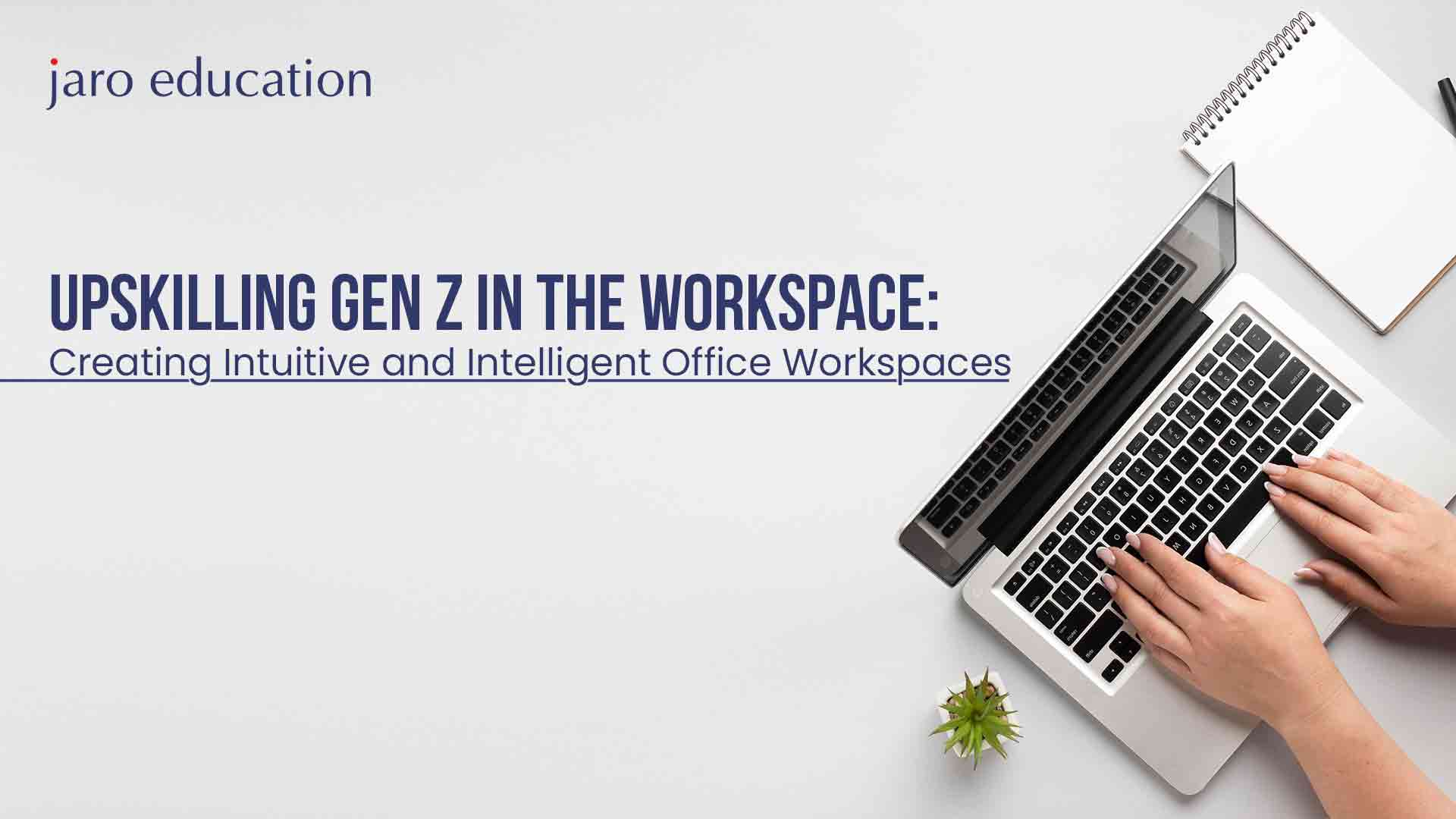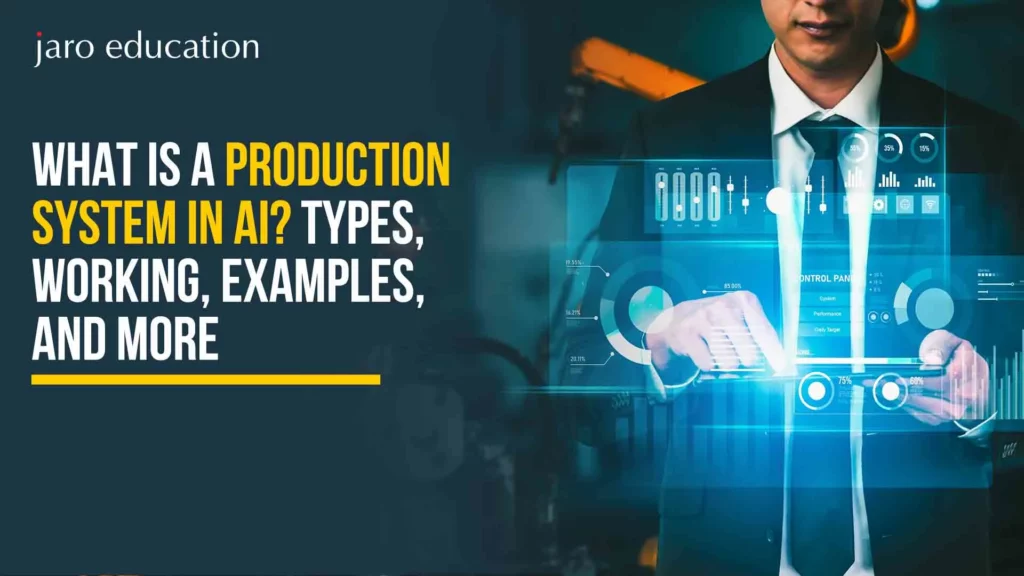Upskilling Gen Z in the Workspace: Creating Intuitive and Intelligent Office Workspaces
Table of Contents

- jaro education
- 25, June 2024
- 10:00 am
Gen Z, born roughly between 1997 and 2012, is swiftly becoming a significant part of the global workforce. Zurich Insurance Group projects that by 2025, Gen Z will comprise 27 percent of the workforce. As digital natives, they bring a fresh perspective to the office workspace, characterized by a deep familiarity with technology and a strong desire for purpose and meaningful engagement in their roles. However, to harness the full potential of Gen Z employees, it is crucial to focus on upskilling and creating intuitive, intelligent office workspaces that cater to their unique needs and preferences.
Understanding Gen Z Office Workplace Preferences
Gen Z employees are distinct in their workplace preferences, driven by their upbringing in a digital world and their exposure to diverse, rapidly changing environments. Key characteristics and preferences of Gen Z employees include:
- Technological Savviness: Having grown up with the internet and smart devices, Gen Z expects workspaces to be equipped with cutting-edge technology. They are quick to adopt new tools and platforms that enhance efficiency and connectivity.
- Flexibility and Work-Life Balance: Gen Z values flexibility in their work arrangements. They prefer workspaces that offer remote working options, flexible hours, and a balance between professional and personal life.
- Collaborative and Inclusive Workspaces: This generation thrives in collaborative settings that encourage teamwork and open communication. They also value diversity and inclusion, expecting workspaces to reflect these principles.
- Continuous Learning and Development: Gen Z places high importance on opportunities for growth and development. They seek employers who invest in their professional development through continuous learning and upskilling programs
Given these preferences, creating workspaces that are technologically advanced, flexible, collaborative, and conducive to continuous learning is essential to attract and retain Gen Z talent.

*TalentLMS and BambooHR
Importance of Upskilling
Technological advancements are reshaping job roles and the skills required to perform them effectively. For Gen Z employees, continuous upskilling is not just a preference but a necessity to stay relevant in a rapidly evolving job market. Here are some strategies for upskilling Gen Z employees:
- Leverage E-Learning Platforms: Utilize online learning platforms to provide flexible, on-demand training opportunities. These platforms can offer a range of courses, from technical skills to soft skills, catering to the diverse learning needs of Gen Z.
- Mentorship and Coaching: Establish mentorship programs where experienced employees can share their knowledge and provide guidance to younger employees. This fosters a culture of continuous learning and knowledge sharing within the workspace.
- Interactive and Gamified Learning: Implement interactive and gamified learning experiences to engage Gen Z employees. Gamification can make learning more enjoyable and motivating, leading to better retention and application of skills.
- Microlearning Modules: Offer bite-sized learning modules that can be completed in short periods. This approach aligns with the shorter attention spans of Gen Z and allows for continuous learning without overwhelming employees.
Creating Intelligent Workspaces
Intelligent office workspaces leverage technology to create environments that enhance productivity, collaboration, and employee well-being. For Gen Z, who are accustomed to smart technology in their daily lives, intelligent workspaces are particularly appealing. Here are some ways to create such workspaces:
- Smart Office Solutions: Implement technologies like IoT (Internet of Things) devices, AI-powered assistants, and smart meeting rooms. These solutions can automate routine tasks, optimize resource usage, and facilitate seamless collaboration within the workspace.
- Collaboration Tools: Use advanced collaboration tools like Slack, Microsoft Teams, and Zoom to enable efficient communication and teamwork. These platforms offer features like real-time messaging, video conferencing, and file sharing, making remote and hybrid work more effective within the office workspace.
- Personalized Work Environments: Use data analytics to understand individual employee preferences and create personalized work environments. This can include adjusting lighting, temperature, and workspace layout within the workspace to enhance comfort and productivity.
- Health and Well-being Technologies: Incorporate technologies that monitor and promote employee health and well-being. For instance, ergonomic furniture, air quality sensors, and wellness apps can contribute to a healthier and more productive workspace.
Examples of Smart Office Solutions
- Cisco Webex Room Devices: These devices integrate video conferencing, digital whiteboarding, and AI-powered features to enhance remote collaboration and in-person meetings within the office workspace.
- Google Workspace: A suite of productivity tools that includes Gmail, Google Docs, and Google Meet, enabling real-time collaboration and communication within the office workspace.
- IoT-Enabled Workspaces: Sensors and smart devices that manage lighting, climate control, and occupancy, creating efficient and comfortable workspaces.
Benefits and Challenges
Benefits
- Enhanced Productivity: Upskilling and intelligent workspaces equip employees with the skills and tools needed to perform their jobs more efficiently, leading to increased productivity.
- Employee Satisfaction and Retention: Investing in upskilling and modern office workspaces demonstrates a commitment to employee development and well-being, leading to higher job satisfaction and retention rates among Gen Z employees.
- Innovation and Competitiveness: A skilled workforce and advanced office workspaces foster innovation, giving companies a competitive edge in the market.
Challenges
- Cost and Resource Allocation: Implementing upskilling programs and intelligent office workspaces requires significant investment. Companies need to allocate resources strategically to balance costs and benefits.
- Change Management: Transitioning to new technologies and office workspaces can be challenging. Effective change management strategies are needed to ensure smooth adoption and minimize resistance from employees.
- Security and Privacy Concerns: With the increased use of technology, ensuring data security and protecting employee privacy becomes critical. Companies must implement robust security measures to mitigate these risks within the office workspace.
Future Trends
Emerging technologies and trends are continuously shaping the future of office workspaces. Some key trends to watch include:
- Artificial Intelligence and Machine Learning: AI and ML will play a larger role in personalizing work environments, predicting maintenance needs, and automating administrative tasks within the office workspace.
- Virtual and Augmented Reality: VR and AR technologies will enhance training programs, virtual meetings, and collaborative projects, making them more immersive and interactive within the office workspace.
- Sustainability and Green Technologies: There will be a growing focus on creating sustainable office workspaces that minimize environmental impact through energy-efficient designs and eco-friendly materials.
- Hybrid Work Models: The trend towards hybrid work models will continue, with more companies adopting flexible work arrangements that combine remote and in-office work within the office workspace.
- Continuous Learning Platforms: Future upskilling strategies will increasingly rely on AI-driven learning platforms that offer personalized learning paths based on individual career goals and skill gaps within the office workspace.
In conclusion, upskilling Gen Z employees and creating intuitive, intelligent office workspaces are essential strategies for companies aiming to stay competitive and innovative. By understanding the preferences of Gen Z, leveraging advanced technologies, and addressing the associated challenges, organizations can create a thriving, future-ready workforce within the office workspace.













2 thoughts on “Upskilling Gen Z in the Workspace: Creating Intuitive and Intelligent Office Workspaces”
Having grown up with the internet and smart devices, Gen Z expects workspaces to be equipped with cutting-edge technology. They are quick to adopt new tools and platforms that enhance efficiency and connectivity.
Thank you for sharing your insights with us. We appreciate your thoughts.